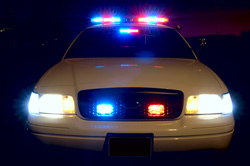Sobriety Checkpoints Guidelines
 |
The U.S. Supreme Court ruled on June 14, 1990 that sobriety checkpoints are legal. Chief Justice Rehnquist stated that sobriety roadblocks are effective and necessary to reducing the number of drunk drivers.
States Determine How Sobriety Checkpoints Are Run
Rehnquist also acknowledged that there must be guidelines set for these roadblocks to avoid becoming overly intrusive. Sobriety checkpoints can not just be set up whenever, wherever and however law enforcement agents choose. The Chief Justice left it to the states to determine what the guidelines should be for the checkpoints.
In order to provide standards to be used by states, the National Highway Traffic Safety Administration (NHTSA) issued a report that recommend checkpoint guidelines in keeping with state and federal legal decisions. To thoroughly understand these guideline, it's imperative to seek DUI attorneys that have extensive knowledge in drunk driving defense.
Guidelines For Checkpoints
- They must be part of an ongoing program to deter driving under the influence. Vigorous enforcement, public information and education need to be part of this program.
- There should be support from their prosecuting attorney. The jurisdiction’s presiding judge should be informed of the proposed checkpoints and procedures.
- There must be existing departmental policy on how to properly conduct a sobriety checkpoint.
- The selection of checkpoints must be done in the interest of public safety and chosen for a specific objective (i.e., high amount of drunk driving accidents in the area.)
- Special care should be taken to warn approaching drivers of the sobriety checkpoint.
- Uniformed officers and marked vehicles should make the police presence obvious.
- A mobile breath testing unit with a qualified operator should be physically located at the checkpoint, if possible. If not, a system for expeditiously transporting suspected violators to chemical test sites should be established.
- If there is any deviation from the predetermined plan for stopping vehicles, it should be well documented, and the reason for the deviation (i.e., traffic backing up, poor weather) given.
- Officers participating in a sobriety checkpoint should be properly trained in detecting impaired drivers. If they suspect a driver of being under the influence, they should be able to investigate further without impeding the flow of traffic.
- To maximize the deterrent effect, sobriety checkpoints should be publicized aggressively.
- There should be a systematic method of data collection and evaluation. This can be used to monitor and ensure standardization and consistency of sobriety checkpoints.
| States/Abbreviations | |||||
| AK | Alaska | LA | Louisiana | OH | Ohio |
| AL | Alabama | MA | Massachusetts | OK | Oklahoma |
| AR | Arkansas | MD | Maryland | OR | Oregon |
| AZ | Arizona | ME | Maine | PA | Pennsylvania |
| CA | California | MI | Michigan | RI | Rhode Island |
| CO | Colorado | MN | Minnesota | SC | South Carolina |
| CT | Connecticut | MO | Missouri | SD | South Dakota |
| DE | Delaware | MS | Mississippi | TN | Tennessee |
| FL | Florida | MT | Montana | TX | Texas |
| GA | Georgia | NC | North Carolina | UT | Utah |
| HI | Hawaii | ND | North Dakota | VT | Vermont |
| IA | Iowa | NE | Nebraska | VA | Virginia |
| ID | Idaho | NH | New Hampshire | WA | Washington State |
| IL | Illinois | NJ | New Jersey | WI | Wisconsin |
| IN | Indiana | NM | New Mexico | WV | West Virginia |
| KS | Kansas | NV | Nevada | WY | Wyoming |
| KY | Kentucky | NY | New York | DC | Washington DC |